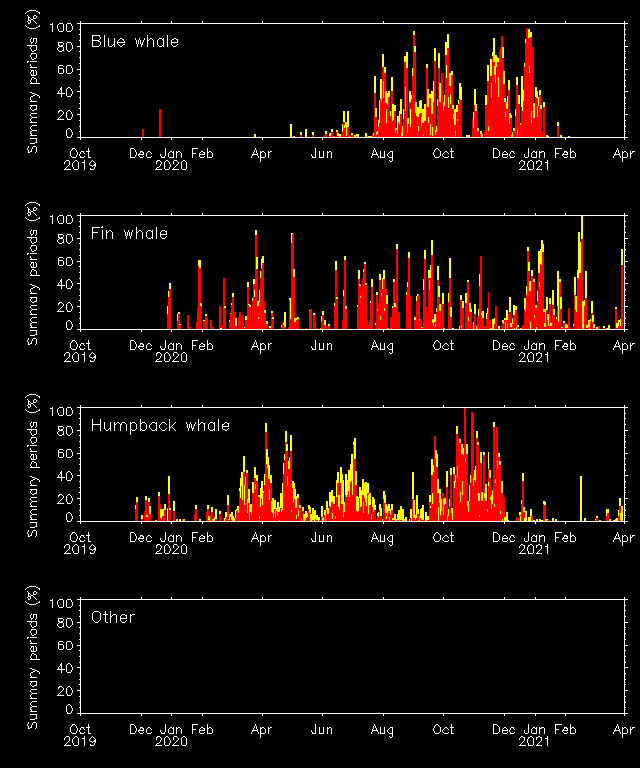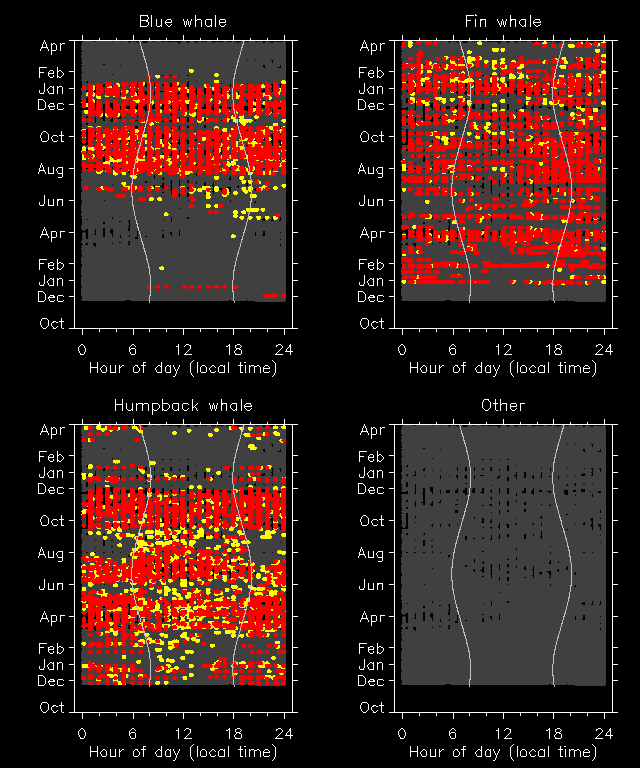Autonomous Real-time Marine Mammal Detections
Woods Hole Oceanographic Institution
Santa Barbara Channel Buoy
Study objectives
A DMON buoy was deployed in Santa Barbara Channel, California, on November 23, 2019 to monitor the presence of baleen whales in near real time by automatically detecting and identifying their calls. Whale detections, particulary detections of endangered blue whales, will be shared with scientists, government managers, and the public to help improve awareness and conservation efforts.
Project team: Mark Baumgartner (Woods Hole Oceanographic Institution), Ana Sirovic (Texas A&M Galveston), and Doug McCauley and Morgan Visalli (Benioff Ocean Initiative).
Analysts: Megan Wood and ana Sirovic (Texas A&M Galveston)

Platform location:

Daily analyst review:
| | Detected |
| Possibly detected |
| Not detected |
Time series:

Diel plot:

Recent bacgkground noise:

Links to detailed information:
Automated detection data
DMON/LFDCS Diagnostics
Platform diagnostics
Questions
Please email Mark Baumgartner at mbaumgartner@whoi.edu. For a general desciption of the detection system and the autonomous platforms, visit dcs.whoi.edu.
Acknowledgements
The DMON buoy was expertly prepared and deployed by the Woods Hole Oceanographic Institution's Mooring Operations and Engineering Group - special thanks to Jeff Pietro, Kris Newhall, Don Peters, and John Kemp. Critical engineering support was provided by Leo-Paul Pelletier, Jim Partan, Tom Hurst, and Keenan Ball at the Woods Hole Oceanographic Institution. Support for the deployment and operation of the buoy was generously provided by the Benioff Ocean Initiative. Additional support for the near real-time analysis was provided by the Flora Family Foundation.
Home




